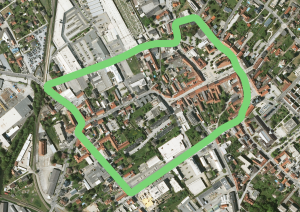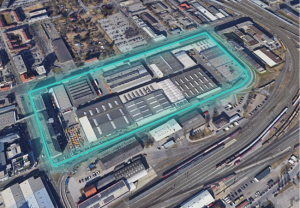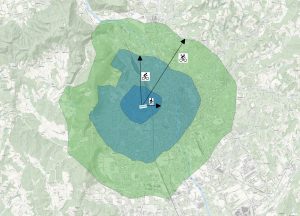Home, Uncategorized
The gradual conversion of the one-way ring road in Gleisdorf (“Gleisdorfer Ring”) from two to one lane has made it possible to reuse the additional road space gained, which is being used to expand the pedestrian and cycle path infrastructure on the basis of the cycling concept of the Province of Styria. PLANUM was commissioned to perform the capacity tests with the support of a microsimulation of different scenarios for the reconstruction of the Gleisdorf one-way ring road.
The reconstruction will be carried out in several sections: the first section “Grazer-Straße – Neugasse” has already been implemented in 2022, the solution has proved to be very successful. In June 2023, the reconstruction of the second section on Schiller Street will begin. Furthermore, Ludwig-Binder-Strasse and the Florianiplatz/ Franz-Bloder-Gasse area are to follow as the third and fourth construction phases. Prior to the implementation of the respective construction section, the performance before and after the respective construction project is examined with the help of a traffic flow simulation, which accurately depicts the road network including all intersections in and around the one-way ring. Based on the simulations, neuralgic points can be identified in advance and attractive solutions for an unhindered traffic flow can be developed. After the implementation of the respective construction stage, the quality of the forecasts is evaluated by using cameras on site over a longer period of time by comparing the results of the video evaluations with the simulation results.
Queries:


